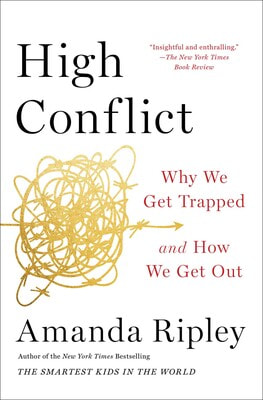|
Any time people get together there is bound to be conflict. Yet we are living at a time when society is divided, and many people lack the skill needed to handle conflict head on—and with respect for all involved. At the CliffsNotes Book Club this month, we discussed Amanda Ripley’s book, High Conflict: Why We Get Trapped and How We Get Out. In the book, Ripley distinguishes between ‘high conflict,’ which is divisive and charged, and ‘healthy conflict,’ which is useful, curiosity-driven, and can lead to deeper understanding. She also talks about the factors that ‘accelerate’ conflict, one of which is identity. Identity is a complex, layered concept. I am a woman, a mother, a wife, an entrepreneur, a soccer-mom…I could go on and on. And each of my ‘labels’ connects me to groups of others. It’s similar in the workplace. We are not just part of a work team (i.e., our ‘seat’ in the org chart), we are connected to many groups. I could be a new hire and ‘in’ with a group of employees who started with me. I could be at headquarters and identify with people who are co-located more so than I do with employees at the smaller, regional offices. I also might identify with my generation or alumni group. I mention this because identity unites and divides. It shapes our worldview and contributes to bias. As Ripley discusses, group identities give us structure, fill us with pride, and encourage peace. At the same time, they can ignite or exacerbate conflict. As I often teach in my diversity courses, it’s not about eliminating your biases, it’s about bringing them to a conscious state so you know when they’re working for you—and, potentially, against you. When you do find yourself faced in an ‘us vs. them’ situation, pause and acknowledge what biases might be getting in the way. The book provides a question set to help shift to a curious mindset and move through conflict. The questions below are essential for any leader to have in their toolkit. Questions to increase your curiosity1. What is oversimplified about this conflict?
2. What do you want to understand about the other side? 3. What do you want the other side to understand about you? 4. What would it feel like if you woke up and this problem was solved? 5. What’s the question nobody’s asking? 6. What do you want to know about this controversy that you don’t already know? 7. Where do you feel torn? 8. Tell me more. What questions would you add to the list?
0 Comments
Your comment will be posted after it is approved.
Leave a Reply. |
AuthorLaura Mendelow |
|
|
©2020. All Rights Reserved. Mendelow Consulting Group, LLC.



